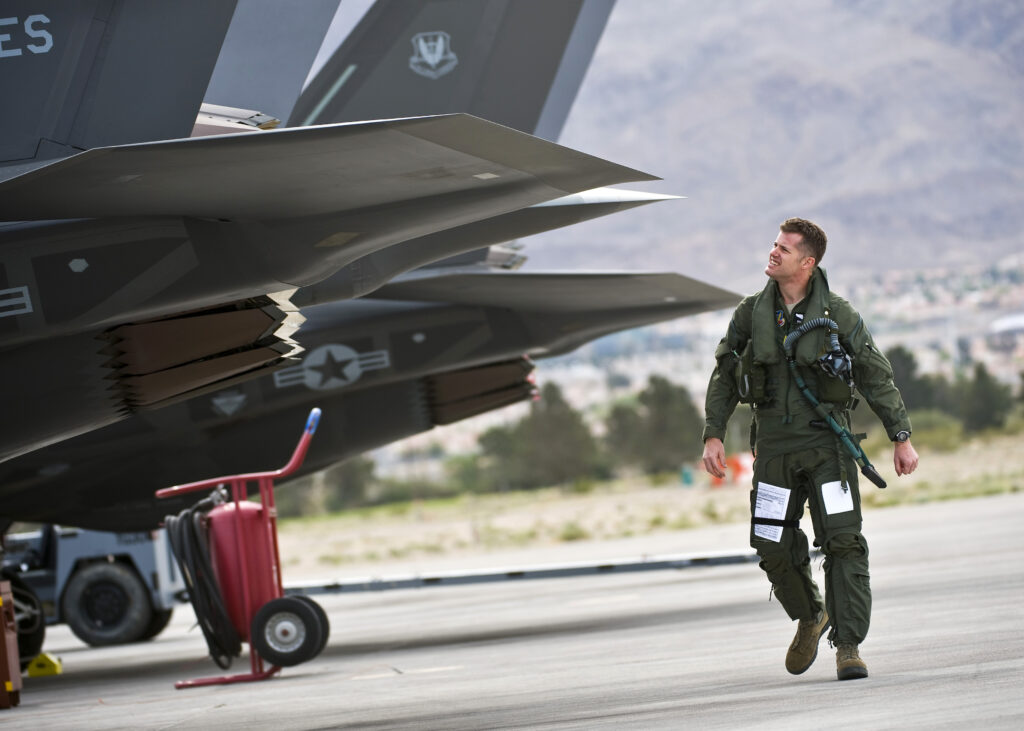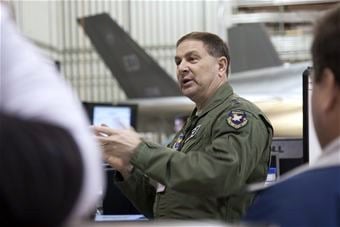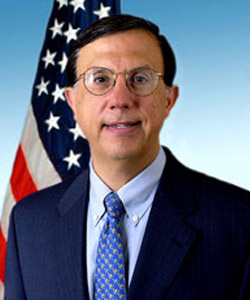Lockheed’s Not Cutting F-35 Costs Enough, But We Know How: Assad, Bogdan
Posted on

F-35As at Nellis.
WASHINGTON: Two top Pentagon officials laid out a multi-pronged push to lower the price of the F-35 Joint Strike Fighter below $80 million apiece. The chief of the F-35 Joint Program Office, Lt. Gen. Chris Bogdan, and the director of defense pricing, Shay Assad, are underwhelmed by contractor Lockheed Martin‘s cost reduction efforts so far. Instead, they said, contractors need to invest more of their own money in reducing cost — with suitable incentives from the government — and streamline the byzantine supply chain.
Meanwhile on the government side, under President Trump’s orders, Defense Secretary Jim Mattis is reviewing both how to reduce the cost of F-35 overall and whether to replace some of the Navy F-35C variants with cheaper but less stealthy Boeing F/A-18E/F Super Hornets.
Based on the tremendous cost and cost overruns of the Lockheed Martin F-35, I have asked Boeing to price-out a comparable F-18 Super Hornet!
— Donald J. Trump (@realDonaldTrump) December 22, 2016
“The F-35C model vs the F-18 (review), that’s drawing nearer to end but it’s not over yet,” Bogdan said. He’s submitted data on the F-35’s current and projected performance, cost to procure, and cost to operate, he said, which is now being reviewed against Super Hornet data provided by the Navy.
“I don’t think the answer is an either/or,” Bogdan said. “You can’t substitute a Super Hornet for an F-35C in the high-end fight (i.e. against Russian or Chinese radars and anti-aircraft missiles). You might be able to afford more Super Hornets, but they’re going to die in the high-end fight, and I don’t know how economical that is.” But, Bogdan continued, “we’re not only go to fight a high-end fight.” There are plenty of operations in lower-threat environments where the Super Hornet is perfectly suitable, he said, and with its current fighter shortfall, the Navy needs as many planes as it can get.

Lt. Gen. Christopher Bogdan
As for the F-35 program in general, Bogdan’s staff has prepared a compendium of ongoing, planned, and possible cost-cutting initiatives, he said, and “that compendium is up for review with the secretary as we speak.”
Speaking separately but largely in synch at the McAleese/Credit Suisse conference here, Bogdan and Assad laid out a multi-pronged approach to cut the stealth fighter’s cost. The previous price goal was to get the cost of the basic F-35A down from $95 million in the latest contract to $80 to $85 million by 2019. Today, said Bogdan, “the new goal we’ve set is that in 2020, an A-model airplane — with engine, in 2020 dollars — is going to be below $80 million.” (The Air Force F-35A is the simplest of the three variants). He also wants to reduce the cost to fuel and maintain the aircraft, its Cost Per Flight Hour, by about a third.
Throughout that period, production will be ramping up with unprecedented speed, to 170 aircraft a year, which should create economies of scale — both production efficiencies and block-buy contracts — but those savings by themselves are insufficient, said Assad. “It’s not the simple concept of, ‘well, we just increase the rate and that reduces the cost.’ That’s not what this is about,” Assad said. “This is actually reducing the cost of building the product.”
Lockheed Martin has its “Blueprint for Affordability” initiative to cut costs by $4 billion — with the government reimbursing the contractor for its investments in greater efficiency — but that effort left both Bogdan and Assad lukewarm.

Shay Assad
“I think Blueprint For Affordability 1 was okay. Just okay. We took the low hanging fruit…. not quite as much as I thought we could,” Bogdan said. “On Blueprint For Affordability 2, I’m looking for a deeper savings, and the way I want to get the deeper savings is to get below the big top-tier suppliers.”
“Blueprint for Affordability has been modestly effective,” Assad said, damning with faint praise. “There are different ways and different approaches… that we can use to get cost reduction.”
First, Shay and Bogdan said, there are opportunities to cut out inefficiencies and unnecessary middlemen in the sprawling, complex network of roughly 1,300 subcontractors, which is less a supply chain than a supply spiderweb. “You’ve got to engage the entire supply chain, you can’t just engage up here,” Bogdan said. “We have to yet to explore that one bit (and) I think there’s a lot to be gained.”
“There’s opportunity for improvement (through) introducing more competition at the subcontractor level when we can,” Assad said. “We just don’t have enough.”
Second, contractors need to invest more of their own money in reducing cost. The Pentagon has ways to incentivize companies that do so, Assad said, authorities it’s not taking full advantage of today, he said. But that doesn’t mean defense contractors should just wait for the Pentagon to make an offer: They need to get to work on price on their own initiative, the way commercial companies do all the time. Compared to the commercial sector, Assad said, defense industry invests a lot less but buys back stock and pays out dividends a lot more.
Contractors have been cautious about investing because “we’ve been on annual procurement and the program has been topsy-turvy in the past, (but) we’re past that, we’re way past that now,” Bogdan said. “(With) a stable three-year production run, they ought to be able to take on some investment to drive some cost out of the program themselves. I don’t think that has happened fast enough.”

A Marine F-35B in vertical landing mode.
None of this hardball on price implies any lack of commitment to F-35, which former critic-in-chief took pains to praise in his State of the Union speech: “We’ve saved taxpayers hundreds of millions of dollars by bringing down the price of the fantastic new F-35 jet fighter.”
“JSF is an incredible game-changer from a warfighting point of view,” Assad said today, and he lauded both Bogdan and his predecessor, Vice Adm. David Venlet, for turning the troubled F-35 program around “technically and programmatically” — but, he said, price remains a problem.
“I believe that President Trump was right on the money when he said…F-35 is too expensive and we had to get the cost down. He’s absolutely right,” Assad said. “(F-35) is unique in the sense that the president is focused on it, and I applaud that, I think it’s great.”
Isn’t the F-35 program pretty far along to start cutting the price significantly, one reporter asked. Assad’s reply: “We’re going to buy almost 3,000 aircraft and we’ve only bought 400. That’s not late in the game for me.”
Subscribe to our newsletter
Promotions, new products and sales. Directly to your inbox.
